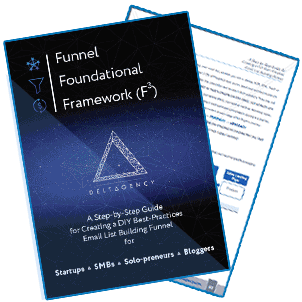Growth Hacking for SaaS, SMB & Startups Bootcamp (4-part Series) Part III: What is CONVERSION? – Getting the MOST from Every Encounter
- by Lance
Welcome to the 3rd week of the Perfect Funnel Challenge series. Hurry and get your copy of the Funnel guide soon! In last week’s article ‘Growth Hacking for SaaS, SMB & Startups Bootcamp (4-part Series) Part II: What is Funnel? The Right Customer, the Right Message in the Right Channel’, we learned about sales funnel mapping, the AIDA model and various approaches that will help you drive different buyer personas from the top to the bottom of the funnel.
This week we will cover Conversions, their importance and how to get the most from every encounter a business has with the customer. After reading this article you will be able to understand the evolution of marketing programs and the shift towards A/B testing.
WHAT IS A CONVERSION?
The most common misconception about a conversion is that it only takes the form of a purchase or a sale. If we explain it like a logical reasoning question, then we can say ‘all purchases are conversions, but not all conversions are purchases.’ Conversion simply means that someone has graduated to the next phase of your sales funnel. This often takes place long before an actual sale.
In its essence, a conversion has occurred when a visitor to your website completes a desired goal, like signing up for your email newsletter, filling out a form, downloading a resource or making a purchase. Goals and their accompanying conversions vary depending on the campaign and business, and can be as simple as opening an email or clicking on a particular link. Basically, conversions are the stepping stones that help companies achieve their main aims.
WHY IS A CONVERSION IMPORTANT?
Conversions serve as indicators to help businesses separate window shoppers from truly potential customers. They also help you understand which stage of the buying journey your website visitor is in based on the action they’re taking on your website.
On a grander scale, conversions help businesses understand if their overall marketing funnel is working as intended. When analyzed, conversions helps business owners identify where there might be leaks in the sales funnel, and gives them the tools to patch it up. For example, if you see a high percentage of customers falling off at the demo stage of the funnel, that will tell you what needs to be fixed. With a properly functioning sales funnel, cued by conversions, you can drive more sales.
ONBOARDING – GETTING A NEW CUSTOMER UP AND RUNNING
Once a customer has bestowed faith in your business by purchaing your products or services, it then becomes your responsibility to ensure that your customer achieves their desired outcome.
Just like any first impression, the initial contact your new customer has with your brand will set the tone for the business-customer relationship. If their initial impression is a bad one, it could all but kill your business. Having a smooth customer onboarding program is one of the best ways to set the tone to that perfect pitch of customer satisfaction.
Your business onboarding process should make sure that there is a smooth transition from the sales team to the project management team. You should also make it your business to understand your consumers’ preferences and to get to know them well. Identify and sort out challenges that may crop up during the onboarding process so that when you do get a customer, you’ll be able to help them achieve their desired goals with your products or services.
ACTIVATION – DRIVING CUSTOMERS TO USE YOUR PRODUCTS AFTER PURCHASE
So, you’ve made some sales and you’ve got some customers (hooray!), but you begin to notice that some of these people have become worryingly inactive after purchase. How do you get your new customers to use the products they’ve just purchased?
Firstly, it never hurts to understand who your customers are. Tracking customer usage patterns will help create customer profiles and identify the right buttons to push when they need some motivation. For example, you can send them emails about the benefits of using your products, but if you are aware of their specific pain points, you can provide them with more specific details for solving their problems, thus propelling them into action.
It’s also a good idea to map your ideal customer’s journey after purchase. That way you have a solid template to compare to the path taken by the majority of your customers. If the ideal journey and the reality of the journey taken by customers do not match up, you’ll be able to identify adjustments that need to me made. You can also take a magnifying glass to features of your product that customers do not use so that in the end you’re left with a lean, mean, converting machine that inspires action.
RE-ENGAGEMENT – REACTIVATION CAMPAIGNS AND TECHNIQUES
Reactivation or re-engagement is the process where businesses reach out to inactive customers or potential customers. The goal of reactivation is to encourage them to become active users.
Below are a few ways to re-engage with inactive customers and drive them to start using your products and solutions:
- Use email activation campaigns to re-engage with inactive customers.
- Include product tours as a part of your onboarding experience.
- Display ads driving them to visit your website/products pages.
- Social media sponsored posts that promote customer success stories.
- Identify the main pain points in using your product and fix those.
- Set up a re-engagement strategy for users who drop off.
- Entice users with the progress they are making.
A/B TESTING AND MULTIVARIATE TESTING
A/B testing is the process of examining different variables within your website for optimal conversion. Businesses today prefer testing various options of look, feel and design when it comes to their landing pages, ads, website pages, emails, email sign up forms, or in-app conversion forms. Nearly any aspect of your website can and should be A/B tested. Most businesses opt for A/B testing where they test two design options/formatting/URLs etc they may have created.
Sometimes businesses also go for multivariate testing that allows you to compare a higher number of variables and the interactions between them. A/B testing and multivariate testing boost conversion rates by helping businesses identify which options perform better.
Tools like Unbounce, KISSmetrics, Optimizely, and Maxymizer will help you run A/B tests to ultimately help you improve your online assets and drive sales.
TAGGING, TRACKING ANALYTICS & REPORTING
In order to identify conversions on your website, it is essential to add relevant tags on your website and mobile apps. A tag is a piece of code you can place in your website’s back end that gathers data about the behavior of visitors. Analyzing and reporting visitors’ activity helps businesses optimize their conversion rates by providing necessary insights into which stage of the buying journey a potential customer is in, how to drive them towards a sale, and how to activate them.
Tools like Google tag manager make using tags easy, especially if you have a lot that you need to manage. However, if you only have one or two tags, it’s simple enough to manually insert them into your website’s source code. If you don’t know where to start, try using Google Analytics and Google Ads conversion tracking, as these are two of the most important tags on the web. You can also use Conversion tracking, which is a free tool that shows you what happens after a customer interacts with your ads.
These tools promote conversion rate optimization, which is the process of increasing the percentage of website visitors who complete a desired goal on a website. Using tags and tracking, businesses analyze the behavior of visitors and focus on elements that motivate customer engagement so as to optimize conversions.
FINAL THOUGHTS
Conversions are one of the most important metrics that help businesses track their potential consumers as they move from the top of the funnel to the bottom of the funnel. Various techniques like A/B testing, multivariate testing and re-engagement campaigns are sure to improve your conversion rates.
In the next post of this series, ‘Growth Hacking for SaaS, SMB & Startups Bootcamp Part IV: Growth Program Operations – Building a Growth Engine’, we will talk about what Growth Program Operations are, their framework (internal as well as external), A/B testing schedules, and how to build a strong growth engine for your business.






